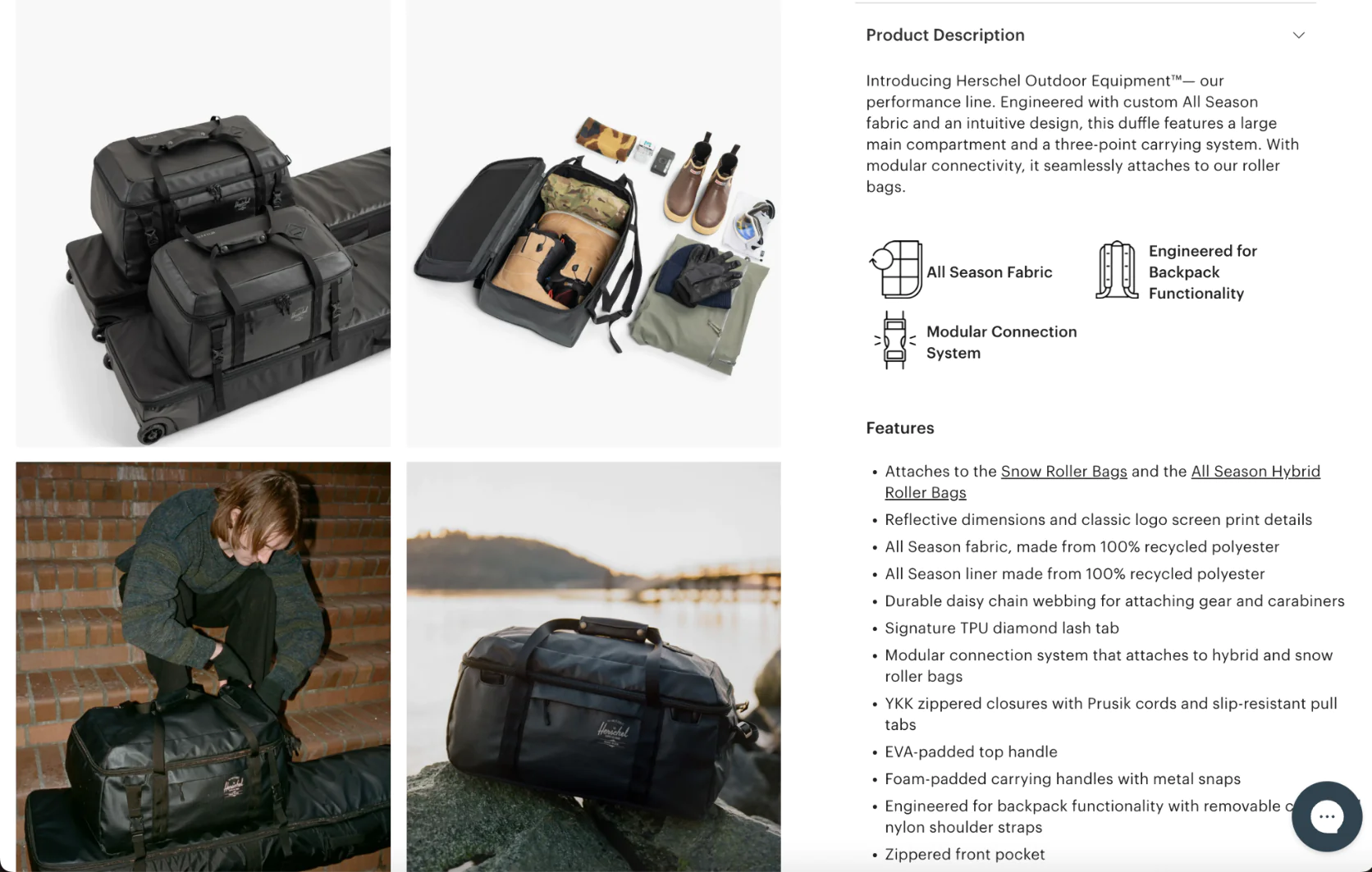Discover how Herschel crafts segment-driven customer journeys for Gen Z and parents with tailored messaging and omnichannel strategies. Learn key insights!
April 23, 2025
Segment-Driven Customer Journeys: How Herschel Tailors Experiences for Different Audiences
Most brands start with a strong sense of who their customers are. But as your business grows, your audience does too—and that original customer profile no longer tells the whole story. Suddenly, you’re speaking to very different groups of people who want very different things from your brand. And tweaking a few Facebook ads won’t cut it.
That’s the challenge Herschel is navigating today. The brand built its reputation with parents buying quality backpacks for their high schoolers. Now, it’s evolving into something more—a premium travel lifestyle brand aimed at college students and young adults.
Many Gen Z consumers still associate us with high school memories. That creates a price sensitivity issue—they expect high school backpack prices, while we’re offering premium travel products. Our challenge is shifting this perception to match our current value.
So how does a brand move beyond its original niche—without alienating loyal customers? We spoke with Keelan to find out how Herschel is designing customer journeys that resonate with multiple segments, and what other marketers can learn from the process.
Executive Summary
For brands reaching multiple audiences, Herschel’s approach offers valuable lessons:
Research-Driven Strategy: Start with the data. Herschel’s research revealed a key gap: Gen Z links the brand to school days. That insight became the foundation for their segment-specific strategy.
Tailored Messaging: Speak to what each audience actually cares about. Herschel highlights size options, durability, and value for parents—while Gen Z sees aspirational travel content and lifestyle imagery that repositions the brand as premium and grown-up.
Strategic Distribution: Place products where each audience shops—and create different digital touchpoints too. For Gen Z, that means Urban Outfitters and Instagram. For parents, it’s Target and Google Shopping.
Understanding Your Segments: Research as the Foundation
Herschel's segmentation strategy begins with a simple principle: you can’t tailor the customer journey until you truly understand who you’re speaking to. The brand identified two key groups—each with different expectations, motivations, and perceptions.
Current Customers: Includes parents shopping for high school students, particularly during back-to-school season, as well as loyal customers who already appreciate the brand. Herschel’s research showed that these customers consistently prioritize two things: distinctive style and long-lasting quality.
Aspirational Target Audience: Gen Z college students with a passion for travel. But research told a more complicated story: through focus groups and surveys, Herschel discovered a major brand perception challenge: many Gen Z consumers still associate the brand with their high school days.
If Gen Z sees you as "that high school brand," they're unlikely to pay premium prices for your travel gear. This insight was a wake-up call. Herschel realized it wasn’t just about launching new products—it was about reshaping how a whole generation sees the brand.
These findings now inform everything from product placement to marketing copy. Every touchpoint is now mapped back to what each audience values—and what they need to hear to move forward in the customer journey.
Tailoring Messages to Segment Values
Parents and Gen Z shoppers come to Herschel with very different expectations—and the brand’s messaging reflects that.
Our existing customers love us for our style and quality. We’ve always talked about how our products are made, and we’ll keep doing that. But we realized we needed to amp up the style factor—showing more lifestyle content with real people actually using our products.
For Gen Z, this means leaning into aspirational travel content—scenes that feel authentic, without veering into high school nostalgia.
This approach goes far beyond ad creative or the homepage. One insight that reshaped Herschel’s digital strategy: 56% of their website traffic lands directly on product pages—bypassing all that carefully crafted homepage storytelling.
That's why Herschel puts so much work into their product pages. High-quality lifestyle photography and subtle brand cues help communicate style and purpose—especially to first-time visitors.

Even when customers skip the homepage, they still get a sense of who the brand is and what it stands for
This “backward design” approach ensures that every customer—whether a loyal parent or a curious Gen Z traveler—experiences the message that’s right for them, even if they enter the site through the side door.
Creating Segment-Specific Journeys: The Omnichannel Approach
Herschel leveraged what they learned about their core and growth audiences to build a channel strategy that supports both—without compromise.
For their aspirational Gen Z audience, the brand takes a thoughtful, full-funnel approach that blends retail partnerships, digital campaigns, and website experiences. They’ve placed products in retailers like Ssense and Urban Outfitters, where Gen Z shoppers already go for fashion-forward picks.
On the digital side, Herschel runs targeted campaigns across YouTube, Meta, Instagram, and TikTok, with content centered around travel aspirations rather than product specs. By meeting Gen Z in their natural digital environments, the brand builds credibility and consistency across multiple touchpoints.

Herschel's travel-inspired campaigns
Meanwhile, the strategy looks entirely different for their core back-to-school audience.
We’ve partnered with mainstream retailers like Target, where we offer our stuff at more wallet-friendly prices. Online, we’re all about capturing demand—pouring resources into search traffic and Google Shopping campaigns. Our goal is simple: when someone’s hunting for anything remotely related to our category, we want to be the first thing they see.
Herschel’s website backs this up with a dedicated back-to-school navigation experience, helping time-pressed parents find what they need fast. Their product mix for this group is curated based on historical data, leaning toward slightly lower price points—without compromising the quality parents expect.
Conclusion: Building Multiple Bridges to One Brand
Herschel’s segmentation playbook shows that great customer journeys aren’t one-size-fits-all.
Instead, they’ve built multiple bridges to the same brand essence—meeting each segment where they are, with the messaging, pricing, and product experience that fits, while guiding them toward a unified brand perception.
Struggling with building personalized customer journeys? Maestra can help you analyze customer segments and build targeted strategies that drive lasting results. Book a demo today to see how our platform can transform your approach to customer data.

